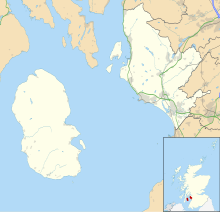
A Marine Conservation Zone (MCZ) is a type of marine nature reserve in UK waters. They were established under the Marine and Coastal Access Act (2009) and are areas designated with the aim to protect nationally important, rare or threatened habitats and species.[1][2] Approximately 20% of UK waters now have some protection although some conservation, fisherman and wildlife groups are concerned that there are no management plans for each zone.[3]
Following Brexit, legislation was introduced into Parliament in January 2020 which would give new powers to the Marine Management Organisation in English waters.

MCZs generally do not provide "no-take" protection banning fishing. However, Lundy Island MCZ includes a preexisting "no-take zone", which was established in 2003.[4] Two more no-take zones were established in UK waters by 2010 (bringing the total area protected to five square kilometres):,[5] and an additional one in 2016 [6]
There has been criticism of the MCZs for not providing "no-take" protection for a higher proportion of UK waters; for example, the environmentalist George Monbiot has raised the issue in his column in The Guardian.[5][10]
Allonby Bay off the Solway Firth, Cumbria, North East of Farnes Deep off Northumberland, and Dolphin Head, West Sussex, have been chosen as Highly Protected Marine Areas (HPMAs), which give greater protection to the marine environment, with prohibitions against activity such as dredging and trawling. The new status came into force in July 2023. Joan Edwards, speaking on behalf of The Wildlife Trusts, said, "These three tiny spots cover just 0.4% of English seas - and we're looking forward to seeing further designations so that we can safeguard our seas for the future."[11][12] A plan to create HPMAs in 10% of Scotland's seas was rejected by the Scottish government following pressure from the fishing industry and some island communities.[13]
On 21 November 2013 the first twenty-seven Marine Conservation Zones were designated, followed by a further twenty-three on 17 January 2016. There are now fifty MCZs in English seas protecting an area of 7,886 sq mi (20,425 km2).[2]
2013 Marine Conservation Zones[edit]
|
2016 Marine Conservation Zones[edit]
|
Following the passing of the Marine Act (Northern Ireland) 2013 only Strangford Lough was designated as a Marine Conservation Zone. In 2015 consultations for a further four proposed MCZs were announced.[14] The consultations ended in March 2016 and the four MCZs were designated in December 2016.[15]
In the summer of 2014 the Cabinet Secretary for Rural Affairs, Food and the Environment announced thirty new Marine Protected Areas.[16] Along with thirty Special Areas of Conservation (SAC), forty-seven Special Protection Areas (SPA) and sixty-one Sites of Special Scientific Interest (SSSI), 20% of Scottish waters have differing levels of protection.[17]
|
There are seventeen protected areas within Scotland's territorial waters (i.e. within 12 nautical miles (22 km))[18]
|
A further thirteen protected areas are outside Scottish territorial waters[19]
|
Skomer Marine Conservation Zone (around the island of Skomer) is the only site in Wales designated as a Marine Conservation Zone. There are 128 marine protected areas in Welsh seas and Natural Resources Wales (Cyfoeth Naturiol Cymru) is consulting with the Welsh Government and the Joint Nature Conservation Committee (JNCC) to consider if anymore areas need protecting.[25]